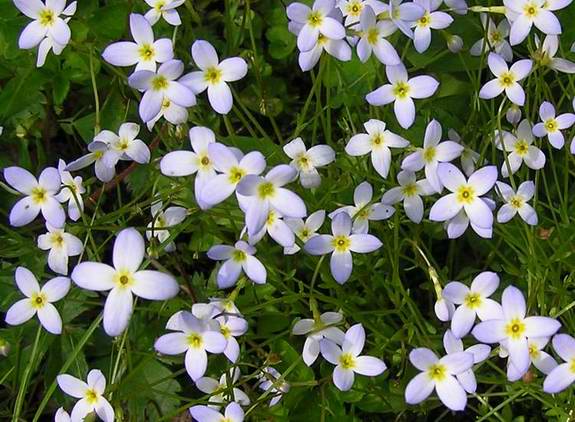|
Return to Hiker's Notebook Home Page
Common Name: Bluets, Quaker ladies, Little washerwomen, Venus's pride, Little innocents, Eyebright - The pervasive delicate pale blue of the small and crowded flowers is reflected in the common name "little blues" or bluets.
Scientific Name: Houstonia caerulea - The generic name is for Dr. William Houston (1695-1733), a Scottish ship's surgeon and amateur botanist who collected plants in Central America and the West Indies. Caeruleus is Latin for sky blue (cerulean).
The creatively descriptive common names of H. caerulea are metaphors for its attributes. The "plain" Quaker woman traditionally wore a cloche style gray bonnet, a "gay" Quaker woman wore more colorful garb; bluets would then resemble the colorful bonneted heads of Quaker ladies - little washerwomen conveys an analogous symbolism. The symmetric, four-petal flowers clustered in small bouquets arranged on the forest floor must surely be the pride of Venus, the goddess of beauty. The yellow centered blossoms look almost like little faces peering innocently upward, like eyebright little innocents.
Bluets are dimorphous, they occur in two distinct forms. Some bluets have tall pistils (female organ) and short stamens (pollen bearing male organ) and others have short pistils and tall stamens. Only tall stamens can fertilize tall pistils and only short stamens can fertilize short pistils. The overarching intent of this arrangement is to prevent self-fertilization, a strategy employed to enhance genetic diversity. The USDA lists 18 species of bluets of which 6 are found in the mid Atlantic; H. caerulea is the "azure bluet." |
